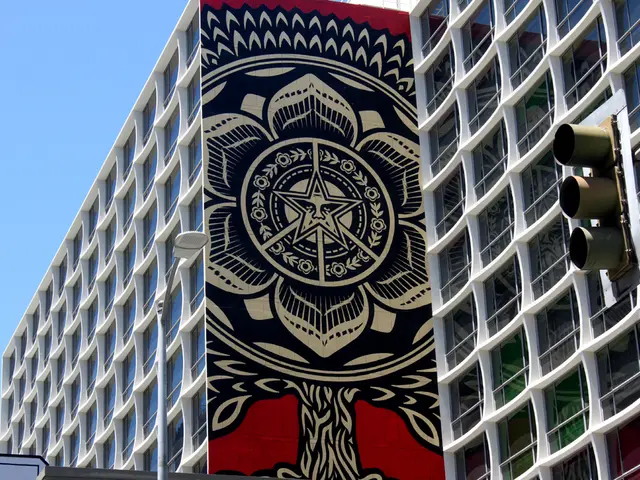The ongoing dispute between the United States and China revolves around trade disagreements and tariff issues in their customs arena.
In August 2025, the current tariff rate between the USA and China on imports stands at a 10% reciprocal tariff, marking a significant reduction from a previous peak of about 145% combined rates [2][4]. This reduced rate, extended by executive order through November 10, 2025, is aimed at encouraging domestic production and strengthening supply chains in the US [1][4]. However, it's essential to note that other US tariff measures on China remain in place, keeping the effective tariff burden on Chinese imports above 30% [2].
The ongoing US-China trade dispute is characterised by several key issues. The US has long sought to address the trade imbalance and push for fairer market access and reciprocal tariff levels [4]. Additionally, US tariffs, particularly those under Section 301, target perceived Chinese intellectual property theft, forced technology transfer, and state subsidies [2]. National security concerns also play a significant role, with tariffs under Section 232 targeting import categories such as steel, aluminium, commercial aircraft, and technology products, citing national security risks [1][2]. The US is also aiming to strengthen domestic supply chains and reduce dependence on Chinese imports [4].
Other complicating factors include tariffs related to the illegal fentanyl trade and measures aimed at Venezuelan oil imports [1][2]. Washington has accused China of deliberately withholding certain raw materials, specifically rare earths, which are crucial for the production of smartphones, screens, and semiconductors [5]. The legal dispute surrounding these tariffs is pending in the USA's appeals court [1].
The cumulative effect of all tariffs has led to an average effective tariff on US consumers of approximately 18–19%, the highest since the 1930s, increasing consumer prices, for example, up to 39% on shoes and 37% on apparel in the short run [3][5].
Negotiations between the US and China continue, with both parties aiming to address these concerns while maintaining a baseline tariff environment that supports American workers and industries [4]. If the appeals court rules in favor of the tariffs, the legal dispute could continue and potentially reach the US Supreme Court. A direct conversation between Presidents Trump and Xi Jinping could occur at a later stage.
It's worth noting that China has responded to the USA's measures almost symmetrically [3]. China seeks to negotiate access to advanced AI chips from the USA during the ongoing trade talks [6]. The USA has restricted deliveries of advanced AI chips to China for years [6].
The extended tariff truce prevents an immediate escalation of trade disputes. The USA has imposed a 30% surcharge on Chinese imports, while China demands a 10% surcharge in response [7]. The tariffs between the USA and China were initially suspended for 90 days in mid-May and were set to expire on August 12, but have been extended for another 90 days, with the new deadline set for November 10, 2021, at 00:01 local time in Washington [8].
The tariffs between the USA and China have undeniably affected the global economy, making trade between the two nations virtually impossible [9]. Beijing views the USA's tariffs as politically motivated and unjust [10]. The USA justifies the tariffs by claiming that many countries treat the USA unfairly and that the tariffs are intended to address imbalances and disadvantages in international trade [11].
As the negotiations continue, both countries strive to find a balance that fosters fair trade, strengthens domestic industries, and supports global economic stability.
Read also:
- Finance Management Organization (FMO) secures €130 million syndicated loan for QNB Leasing in Turkey
- "Dismissed USAID Employees Allegedly Swindle Taxpayers - Prosecution Necessary!"
- Industrial blasts at US Steel facility in Pennsylvania claim one life, one person is unaccounted for, and ten individuals suffer injuries
- Record-breaking second-highest transfer fee for a right back:







